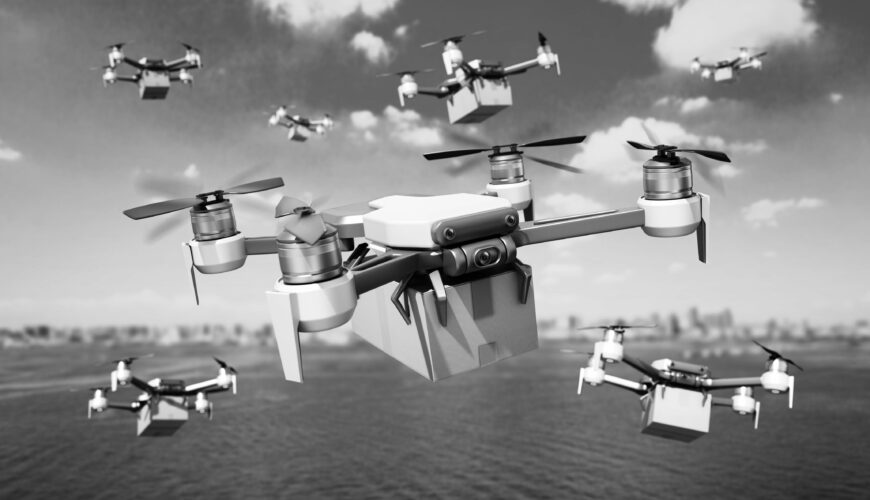More drone delivery carriers are entering the race for air-based last mile deliveries. This article explores the evolving landscape of drone delivery and the key players vying for a share of the airspace alongside Wing delivery.
The Competitive Landscape of Drone Delivery Carriers
Wing’s pioneering efforts have paved the way for other companies to explore the possibilities of more drone delivery carriers. These competitors bring their own unique strengths and strategies to the table, creating a dynamic and rapidly evolving competitive landscape.
1. Amazon Prime Air Drone Delivery
Amazon, the e-commerce giant, has been at the forefront of the drone delivery race with its Amazon Prime Air initiative. Leveraging its extensive distribution network and logistical expertise, Amazon aims to use drones for ultra-fast deliveries of packages to customers. The company has been actively testing its prototypes and has received approvals for limited drone operations in certain areas.
Amazon’s vast resources and customer base make it a formidable competitor in the drone delivery space. With its global reach, it has the potential to scale its drone delivery services quickly, challenging Wing’s market dominance.
2. Uber Eats Drone Delivery
Uber, known for its ride-sharing platform, has also entered the drone delivery arena through Uber Eats. The company envisions a future where drones can be used to transport food orders from restaurants to customers’ doorsteps. While Uber Eats may not have the same logistics infrastructure as Amazon, its established presence in the food delivery market gives it a competitive edge.
Uber’s focus on urban mobility and the integration of drones into its existing platform could provide unique advantages, especially in densely populated areas.
3. DHL Parcelcopter
DHL, one of the world’s largest logistics companies, has been exploring the use of drones for parcel delivery through its Parcelcopter program. DHL’s extensive global network and experience in the delivery industry position it as a strong contender in the drone delivery space. The company has conducted successful trials of its delivery drones in remote and challenging environments, demonstrating the technology’s adaptability.
4. FedEx Drone Delivery
FedEx, a major player in the global courier and logistics industry, is not far behind in the race for drone delivery supremacy. The company has been actively testing new technology for various use cases, including last-mile deliveries and healthcare supply chain logistics. FedEx’s expertise in international shipping and supply chain management could be leveraged to create a competitive drone delivery service.
The Implications of Competition
The entry of these major players into the drone delivery carriers market has several implications for the industry:
1. Accelerated Innovation
Competition drives innovation, and the presence of multiple players in the space is likely to spur rapid advancements in technology. This could lead to the development of more sophisticated drones, improved safety features, and enhanced delivery capabilities.
2. Expanding Service Offerings
As competition intensifies, companies will likely expand their service offerings beyond traditional package delivery. This could include the delivery of medical supplies, essential groceries, and other time-sensitive items. Customers can expect a wider range of goods to be delivered by drones in the near future.
3. Regulatory Challenges
As more companies enter the drone delivery market, regulatory challenges may become more complex. Aviation authorities will need to navigate a growing number of drone operators and ensure that safety standards are upheld. Coordinating airspace usage and addressing privacy concerns will be critical tasks for regulators.
4. Regional Variation
Different regions and countries may adopt varying approaches to drone delivery regulation. Some may be more receptive to drone delivery services, while others may impose stricter rules. Companies will need to tailor their strategies to navigate these regional variations effectively.
Drone Delivery Carriers: The Consumer Perspective
From a consumer perspective, the proliferation of drone delivery carriers promises greater choice and convenience. With multiple options to choose from, consumers can select the drone delivery service that best meets their needs in terms of speed, cost, and availability.
However, consumer acceptance of drone delivery may also be influenced by factors such as trust in the brand, safety assurances, and the reliability of the service. Companies that can build trust and deliver a seamless customer experience are likely to gain a competitive advantage.
Conclusion
The emergence of more drone delivery carriers space signals an exciting era of innovation and expansion for this transformative technology. While Wing has been a trailblazer in the field, it now faces formidable rivals with their own unique strengths and strategies.
As these companies vie for dominance in the skies, consumers stand to benefit from faster, more convenient deliveries. However, the road ahead is not without challenges, including regulatory complexities and the need to address privacy concerns.
Ultimately, the future of drone delivery is one of both cooperation and competition. The combined efforts of these industry leaders have the potential to usher in a new era of efficient, sustainable, and customer-focused delivery services, changing the way we receive goods and shaping the landscape of last-mile delivery for years to come.


